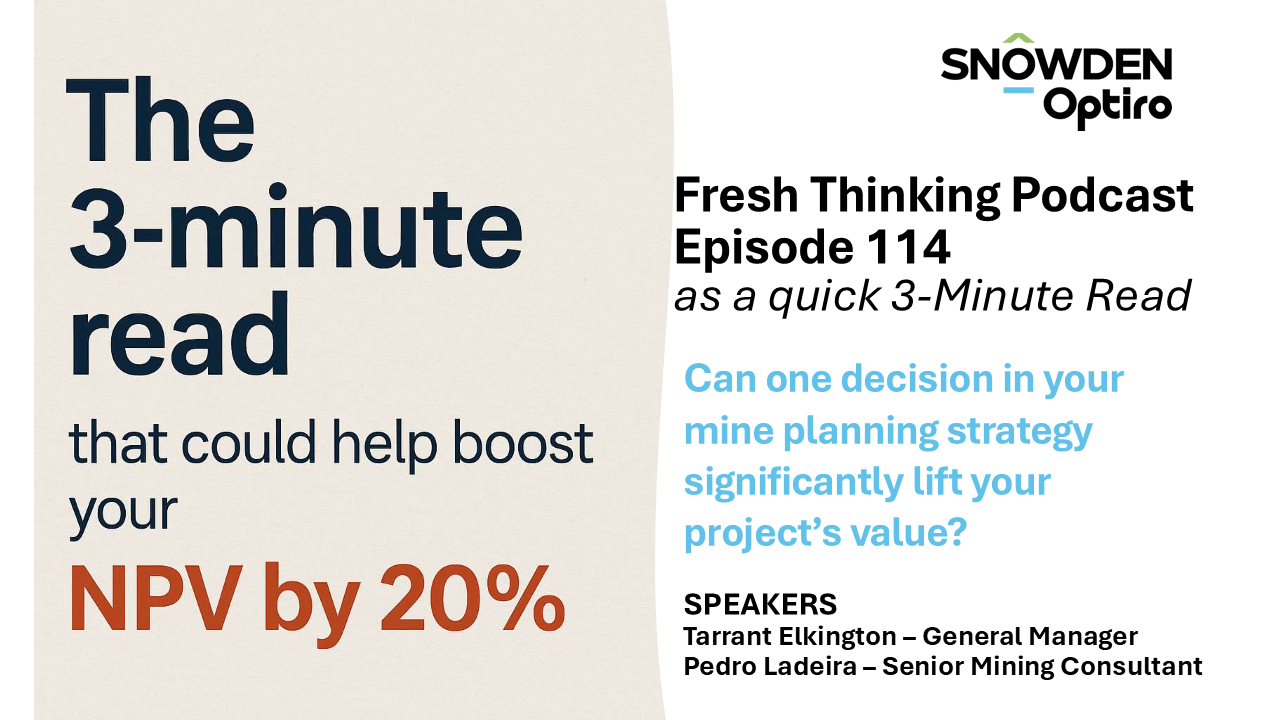


To help you get the most out of your QAQC data, here are some useful 30 Second blasts of information from Paul Blackney and Ian Glacken.
Always use a ‘multiplot’ to review Standards assay results: Employing a ‘multiplot’ to depict assays received for a set of Standards often allows inadvertent Standards swaps to be readily identified. Reviewing the same data in isolation on individual control charts may otherwise result in a swap being identified as a ‘failure’ event when in fact the standard is a valid test. Author: Paul Blackney

Employ a minimum of four Certified Reference Materials (CRM’s or Standards) at any one time: A typical protocol is to insert CRMs that allow assay accuracy to be monitored at grades equivalent to the anticipated (or known) break-even cut-off grade, the average mineralisation or ore grade, and at a high grade for the deposit. The fourth CRM should be similar to, but different from, one of these three values – typically the average grade value. For small drilling campaigns, it may be necessary to increase the CRM submission rate to ensure that a statistically meaningful number of results are obtained for each CRM. Author: Paul Blackney

Field duplicate samples obtained from waste materials add little value to the analysis of sample precision, particularly in precious metal deposits: Sampling protocols often dictate the collection of field duplicate samples at a fixed rate relative to the number of routine assay samples collected. In many deposit types, this practice results in a large proportion of data obtained being derived from low grade waste materials rather than mineralised zones. This information adds little value to the analysis of sample precision. Better practice is to adopt sampling protocols that allow field duplicate samples to be selected after mineralised zones have been identified by the geologist. This approach provides more relevant data but does increase the complexity of the underlying sampling protocol. Author: Paul Blackney

Always evaluate the cause of any Certified Reference Material (CRM) assay result outside of the certified three standard deviation grade range: Statistically, less than three in each 1,000 results should be outside this range, making this protocol a useful tool for identifying when to investigate further. Some QC protocols dictate that investigations are undertaken if a CRM assay result lies outside of the certified two standard deviation grade range. This protocol will leads to a lot of misplaced effort as in excess of 4% of all results should legitimately be outside this range. If significantly more than 4% of the assay results lie outside of the two standard deviation range, then further investigation is warranted. Author: Paul Blackney

Blanks should never be inserted at regular intervals within the sample stream: It is always much more easy for automation of the QAQC process that blanks are inserted at regular intervals, but this is not optimal and is in fact a waste of money. Since blanks are designed to test contamination between samples due to the preparation equipment, the best ‘value’ from a blank is to be placed within or immediately after a high-grade zone (if these can be identified a priori). This is a hassle for system design but arguably the value outweighs the cost. Author: Ian Glacken

Don’t forget density QAQC: In some orebodies the bulk density or specific gravity is not a major contributor to the outcome, but in the majority of deposits it is as important to get density right as it is to ensure correct assays. This means having a density standard (an aluminium cylinder is preferred) and thinking about doing density duplicate measurements. The concept of a blank is not so applicable. Of course correct bulk density determination is critical for an orebody with oxide and transitional weathered material. Author: Ian Glacken
If you’d like to contact Paul and Ian, please phone them on +61(0)8 9215 0000 or use these email links:
Paul Blackney: pblackney@snowdenoptiro.com
Ian Glacken: iglacken@snowdenoptiro.com
If you are interested in attending Paul Blackney’s 2-day Getting the most out of QAQC Data course – please use this LINK to access the course information.


Subscribe here for our podcasts, technical articles and news
